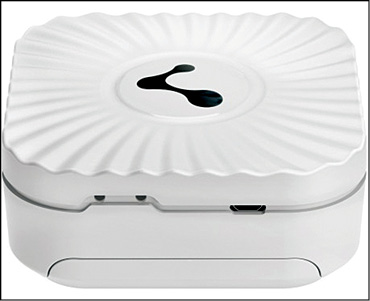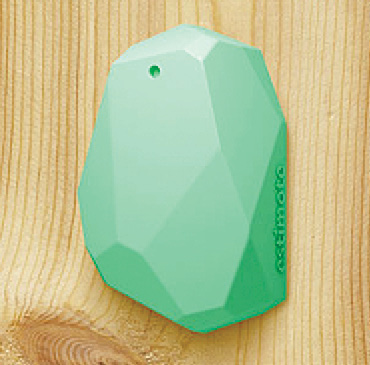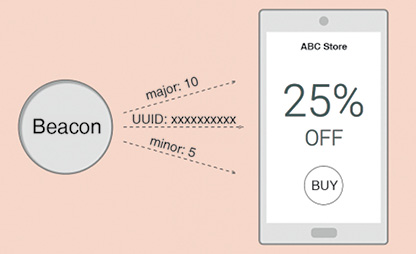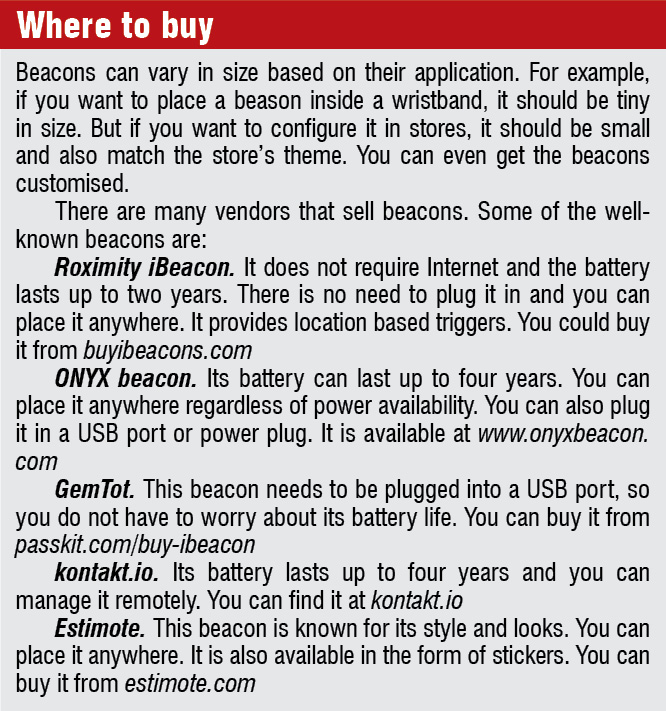iBeacon, introduced by Apple in 2013, is a technology that uses Bluetooth Low Energy (BLE) to broadcast and receive small amounts of information within short distances. It allows smartphones and other devices to perform some actions when these are within proximity to it. In short, someone can use iBeacon to tell nearby smartphones of its presence. It may not sound like much but you can make it quite interesting and useful with proper software and ideas.
How it works
A beacon is a broadcaster that always lets you know of its presence and how to identify it. For it to be useful, it requires a receiver (smartphone app) that can detect it and do whatever it needs to do based on how close it is from it. The beacon sends data all the time. When it is in advertisement mode, it sends data with three parameters, namely, a universally unique identifier (UUID), a major and a minor value.
Let us take the example of an exhibition that needs to set up beacon sensors and an app that can help and guide the visitors. The exhibition organisers could define a UUID that is unique to the beacons inside the exhibition area and their app. They can assign major and minor values according to the sections inside the exhibition area, like major value 0, minor value 1 near the entrance, minor value 2 near the drinks section.



The app receives the advertisement frame (data) broadcast by each beacon inside the exhibition area and, based on that, tells how close the smartphone is from each of these and takes required actions.
The actions could be showing alerts, offering something and the like, for which it may need to contact the server using an application programming interface (API). Visitors who have installed the app would receive a welcome message at the entrance of the exhibition; if they are at drinks section, they would receive a voice message containing details about the next section, and so on.
If beacons are deployed at a store, customers would receive information regarding special offers. Similarly, if beacons are deployed in a museum, visitors would receive directions to its different sections.
What is BLE
BLE, which stands for Bluetooth Low Energy, is also known as Bluetooth Smart. It was introduced by Bluetooth Special Interest Group with an aim to build more energy-efficient applications in healthcare, fitness, home, beacons and security fields.
Most smartphones available these days are BLE-enabled. BLE is a mode that can be used to pair devices like beacons, smartwatches or wristbands. If a smartphone is BLE-enabled, it does not mean that it would use BLE every time it is paired. For example, if a Bluetooth headphone is paired, it would not use BLE to stream music, but if a smartwatch or wristband is paired, it would use BLE.
The main difference between classic Bluetooth and BLE is the energy required to transmit data between two devices. Because BLE is focused, it can transfer small amounts of data with slow speed as compared to Bluetooth. BLE cannot transfer data like audio/video as it is not supposed to work with applications that require high amounts of data transfer with high speed.
How stable are beacons
As beacons work on wireless technology, these can be unstable or imprecise when broadcasting data. Their stability depends on many factors like distance between beacon and the receiver, battery status, obstacles and interference in signals, among others. It also depends on how fast the app is ranging the beacons. For example, Apple limits the scanning to one per second. So even when the beacons are configured to broadcast data at faster rates, the app will not be able to scan these at a rate higher than one second.

Developed apps using beacons
All smartphones and tablets that have Bluetooth 4.0+ (PLE-enabled) support beacons. There are various apps that can be developed using beacons.
For retail stores. Retail store owners can use beacons to advertise store offers. Customers who have installed the store’s app on their device would receive details regarding various offers.
For tracking people. Beacons could be used to track persons/resources/workers. People can wear beacons on their wrists and when they move out of the area being tracked, the app could be configured to sound an alarm. These could also be used to track children and pets, and even Alzheimer patients.
For providing directions/details. Let us say, you are visiting a zoo and you have installed an app for the same. Once you enter, the app would give you directions to the different areas or sections within the zoo. If you are at the white tiger’s cage, the app would display information about the animal.
Similarly, while visiting a museum, the app would give details about a painting that you are studying.
Automation. Imagine returning home after a long day and the door opening automatically. This type of automation is also possible using beacons. This can be implemented in houses, garages, industries and many other places.
The author is works as a project coordinator – mobile apps, Multidots Solutions Pvt Ltd







